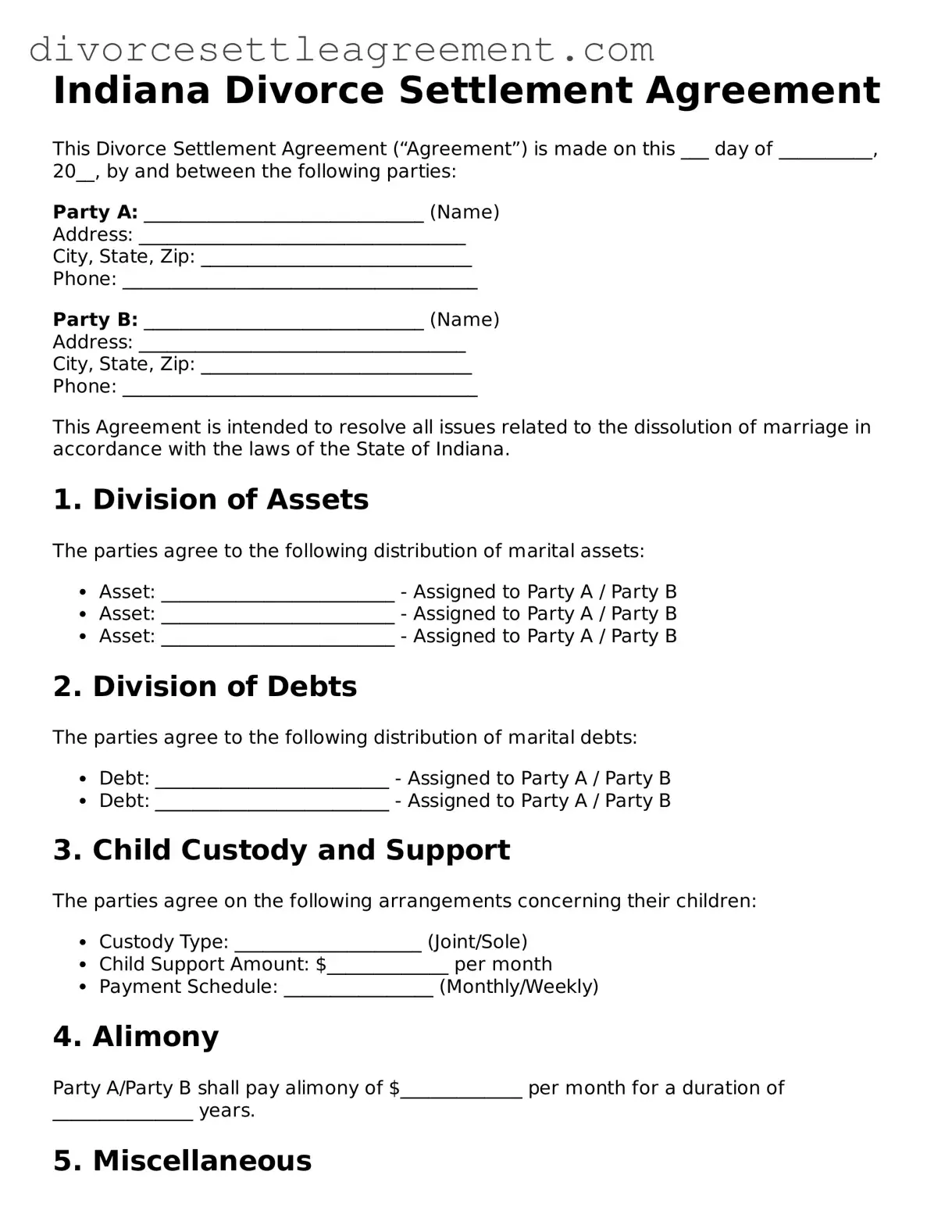What is an Indiana Divorce Settlement Agreement?
An Indiana Divorce Settlement Agreement is a legal document that outlines the terms agreed upon by both spouses during a divorce. It covers various aspects such as property division, debt allocation, child custody, and support arrangements. This agreement helps to clarify the rights and responsibilities of each party after the divorce is finalized.
Why is a Divorce Settlement Agreement important?
This agreement is crucial because it provides a clear framework for how assets and responsibilities will be divided. It minimizes the potential for disputes after the divorce and ensures that both parties have a mutual understanding of their obligations. Additionally, a properly executed agreement can be enforced by the court.
How do I create a Divorce Settlement Agreement in Indiana?
To create a Divorce Settlement Agreement, both parties must discuss and negotiate the terms they wish to include. It is advisable to put these terms in writing, detailing each party's rights and responsibilities. Once both parties agree, the document should be signed and notarized to ensure its validity. Consulting a legal professional can help ensure that the agreement meets all legal requirements.
Can I modify the Divorce Settlement Agreement after it is signed?
Yes, modifications can be made to a Divorce Settlement Agreement after it is signed, but both parties must agree to the changes. It is important to document any modifications in writing and have both parties sign the new agreement. If the changes are significant, it may be wise to seek legal advice to ensure compliance with Indiana law.
What happens if one party does not comply with the agreement?
If one party fails to comply with the terms of the Divorce Settlement Agreement, the other party can seek enforcement through the court. The court may order compliance or impose penalties. It is essential to keep records of any violations to support your case if enforcement becomes necessary.
Is a Divorce Settlement Agreement legally binding?
Yes, once signed and notarized, a Divorce Settlement Agreement is legally binding. It is enforceable in court, meaning that both parties are obligated to adhere to the terms outlined in the agreement. Failure to comply can result in legal consequences.
Do I need an attorney to draft a Divorce Settlement Agreement?
While it is not legally required to have an attorney draft a Divorce Settlement Agreement, it is highly recommended. An attorney can provide valuable guidance, ensure that all legal requirements are met, and help protect your interests. If both parties agree, they may choose to use a mediator to facilitate the process.
How long does it take to finalize a Divorce Settlement Agreement?
The time it takes to finalize a Divorce Settlement Agreement varies depending on the complexity of the issues and the willingness of both parties to negotiate. If both parties are cooperative and reach an agreement quickly, it may take a few weeks. However, if there are disputes, it could take several months or longer to resolve all issues satisfactorily.
